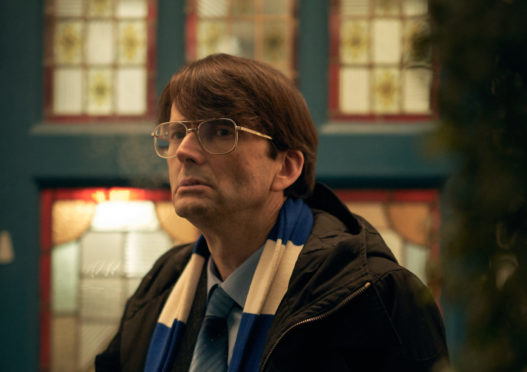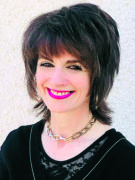Watching David Tennant’s chilling performance as serial killer Dennis Nilsen this week brought back strange memories. Somewhere around 2001, the phone rings on a Sunday morning.
The female voice is elderly, gentle, with an audible, suppressed excitement. She has been thinking since we spoke.
She would like to see Dennis again. Will I take her on the journey to a high security prison? The caller is Betty Scott, Dennis Nilsen’s mother.
I am not at home in the Highlands that morning, but in Glasgow, visiting my own mother. She is four hours in one direction, Betty almost three in another.
I have not been back to see Betty, despite her requests, after a television interview we did about Dennis. I don’t want her to feel she has been gobbled up by the media, then discarded in her distress, but I work, have young children and any weekend trips are to Glasgow.
So Betty phones sometimes instead, chatting about her love of country music and her coach trips to see various artists. I feel guilty when she says she has bought me local Broch candy. When will I collect it?
In our interview, Betty had described Dennis’s childhood. The killer who lured young men to his flat, who murdered at least 12 of them, dismembering them and boiling their body parts in an attempt to dispose of them, was described by his mum as a “very caring” child.
Dennis loved birds. When he found an injured one, he would scoop it up gently and ask Betty for a shoebox and some cotton wool. You have to let it go when it gets better, she would warn him. Oh, he knew that, he said.
When the time came, he would lift his window and let the little bird fly free and she would see his sadness that it had gone.
It seemed remarkable, yet it shouldn’t be. We are all multi-layered, no person all good or all bad.
In a famous book about writing, American horror author Stephen King said that characters were far more terrifying when they were not simply stereotypes. It’s easy to dismiss someone when we see them as a one-dimensional monster.
How much more destabilising and confusing when we see strands of humanity streaked through layers of monstrous cruelty and violence? The serial killer who nurses wounded birds.
Betty regretted the confusion Dennis was caused as a young child when shown his beloved grandfather’s dead body. I had no way of knowing what she had been like as a mother. But I could see her humanity as she talked.
I read once that she was in denial about her son but I saw no evidence of that. She walked a remarkably difficult tightrope. She expressed abhorrence at her son’s crimes, her deep hurt inside for those families he had destroyed, her incomprehension at what had happened.
But she also expressed another emotion – a mother’s enduring love for the son she had known and cared for.
Had she never secretly regretted his birth? “Oh no, no, no,” she said, eyes bright with unshed tears. She couldn’t simply sweep Dennis under the carpet.
There was a meaning to life, a purpose to everyone and it was not for her to fathom what Dennis’s was. “He was kind,” she said simply. God still loved her son, she said and so did she. In the studio, there was silence when the cameras stopped rolling.
It all came back this week, the sadness, the dilemma of that Sunday morning. Wouldn’t it be better if family went with her? No, please come. The truth was that not only was it almost impossible domestically, I didn’t want to. I didn’t want to meet Dennis Nilsen, or try to understand the different layers of broken bird and monster inside him.
But as my own children played, I remembered Betty’s words in the studio about how she loved him still and didn’t have the heart to say no.
I wrote to him. I have attempted plenty of persuasive letters as a journalist. But I wasn’t writing as a journalist and, this time, couldn’t publish anything.
I was writing for his mum. I told him nothing about me because, somehow, I dreaded being personally connected to an evil that I couldn’t understand.
Shame on me, I guess – both personally and as a writer – but on this occasion, horror outweighed curiosity. I wasn’t persuasive and he sniffed my reluctance – the letter failed.
Watching David Tennant’s compelling performance chilled me. It captured something on screen that I read in Nilsen’s reply to Betty. A cold intelligence, a supercilious superiority.
This person who wanted to come with her was probably a journalist, he warned. She should be careful. The visit never materialised. Watching the account of his manipulative engagement with professionals in this week’s drama, I couldn’t be sorry.
Betty is gone now and so is Dennis Nilsen. For me, they represented two baffling extremes of human potential and capability.
One, an inexplicable psychopathy, but the other, a love that was greater than the evil it embraced.
In that, there is a kind of hope.

